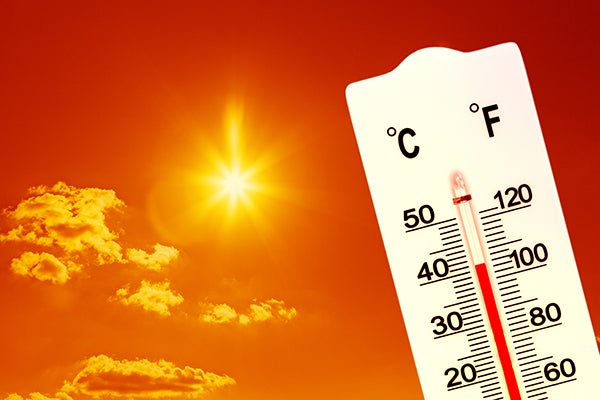
It’s going to be hot tomorrow, what should I do?
- Pre-cool your home. Open windows on both the upwind and downwind sides of your house the night before a predicted hot day to let natural airflow cool your house down close to outdoor nighttime temperatures. If you’re in a multi-story home, opening windows on your top floor and bottom floor will allow the natural chimney effect to pull in cool and push out warm air. If the nighttime air is calm, putting a fan in the window to draw in cool air and push out hot air, might be beneficial.
- Trap that cold air. Before the day starts heating up, close your windows and draw the blinds on windows that are exposed to the sun. Try to keep windows or doors shut when it’s cooler inside than outside.
- Use a fan to cool you! A fan doesn’t cool the air, but moving air helps your body’s natural cooling processes (perspiration) work better. Fan motors put out heat, so only use them when you’re in the room to benefit from the moving air.
- If possible, go downstairs. Warmer air usually rises, so downstairs is likely to be cooler than upstairs. Take advantage of your basement, as walls and floors are tempered by the cool earth, and are likely much cooler than other parts of the house on a hot day.
- Don’t add extra heat to your home. Electric appliances and lighting all give off heat when they’re working, so use them sparingly. Maybe it’s a good evening for a cold dinner. If you have to cook, use appliances that use less energy and produce less heat – a microwave produces a tiny fraction of the heat that a stove or oven does.
- Cool yourself. Drink cool hydrating liquids. Wipe your face, neck, and wrists with a cool wet cloth. If you get really hot, a cold shower might feel really good and can bring your core body temperature down pretty quickly. Be sure to check for signs of heatstroke if you’re feeling ill.
- Sleep comfortably. Your bedroom might not be the coolest room in the house – consider moving to where it’s cooler to sleep more comfortably. You can even try sleeping in light loose cotton pajamas on top of the covers.
I have a day to plan for hot weather, what could I do that would be even better?
- Shade your home. Bamboo shades or light-colored cloths hanging on the outside of your house, particularly in front of east, south, and west-facing windows and doors, can keep the direct sun from getting to your house in the first place. Notice where the heat has come in the most in the past and focus there first.
- Make some extra ice. On a hot day, no one wants to run out of ice for their drinks. Store ice you’ve already made in a plastic bag or freezer container and start making more to stock up.
- Turn off and unplug every electrical appliance you can.
This summer is a wake-up call, I need to make some changes by next summer. What should I do?
- Insulate and air-seal your home. The same insulation that keeps the heat inside in the winter, can keep it out in the summer. If your walls aren’t insulated, or your attic only has a few inches of insulation, see if you can upgrade your insulation. Your heating bills will be lower and you’ll be more comfortable year-round.
- Upgrade from single-pane windows. Better windows provide year-round benefit by reducing heat flow along with the air leaks that can make a home uncomfortable.
- Plant shade trees. It may be a few years before they do much for you but thinking ahead is always a good idea. Deciduous shade trees on the south and west side of your home can help keep out the summer sun, while letting the winter sun come through once the leaves have fallen. A southside arbor with vines, like kiwis or grapes, might be an option too and vines tend to grow pretty quickly.
- Install awnings over sun-facing windows. Like with the shades mentioned above, keeping the sun off your home is better than trying to get that heat out after it’s already in.
